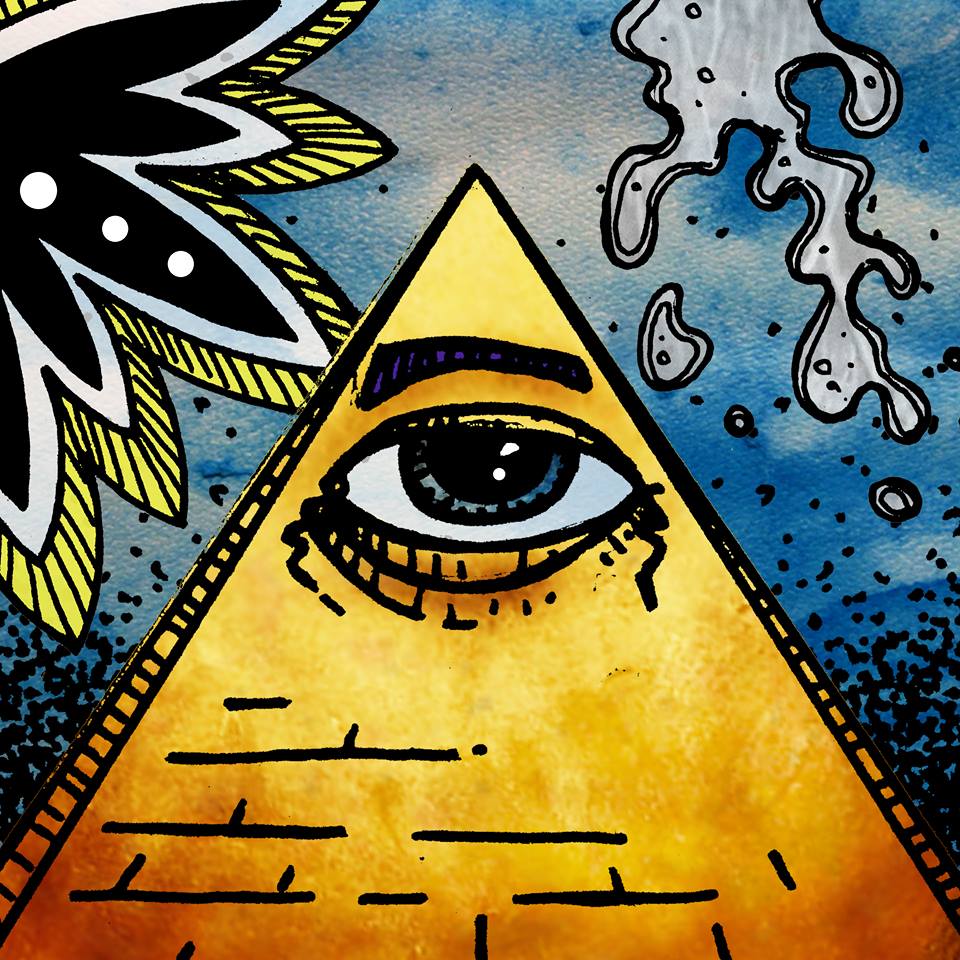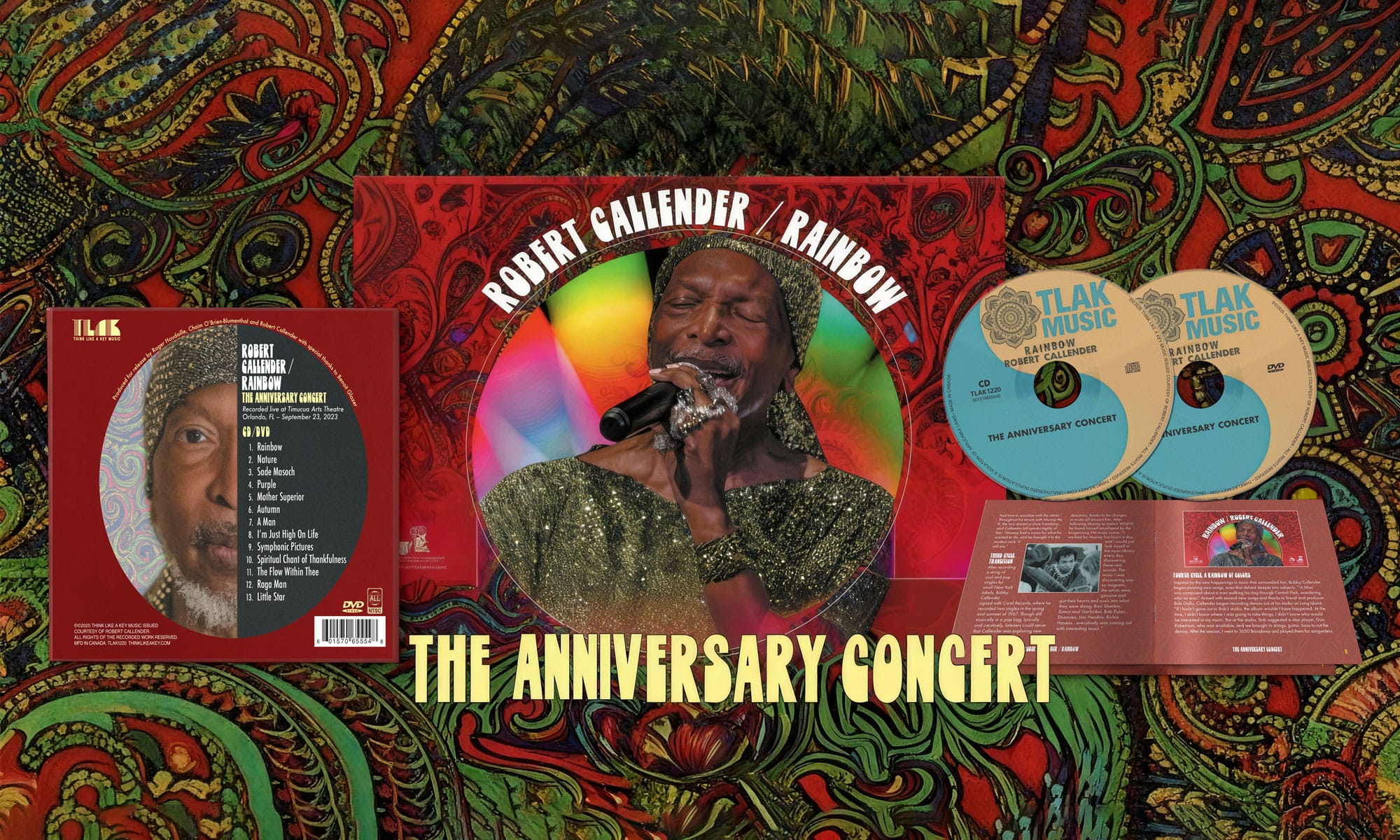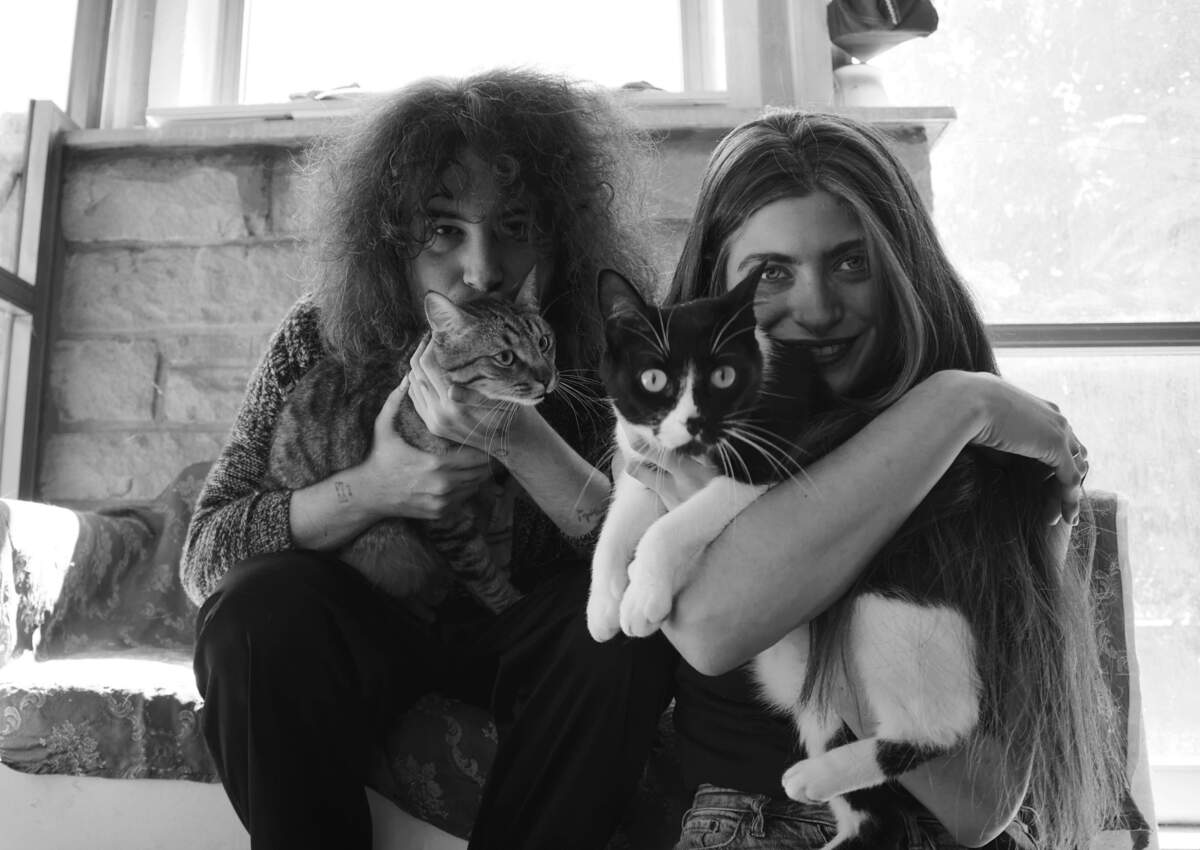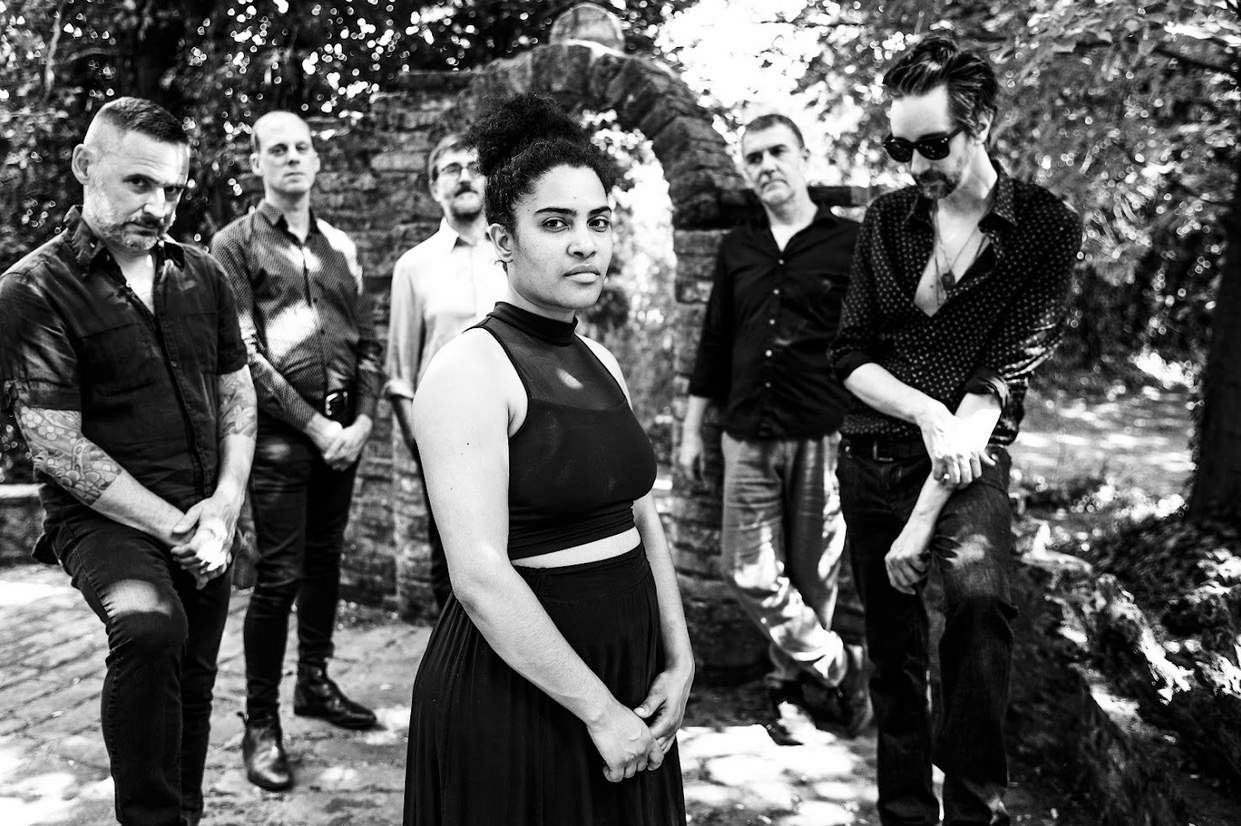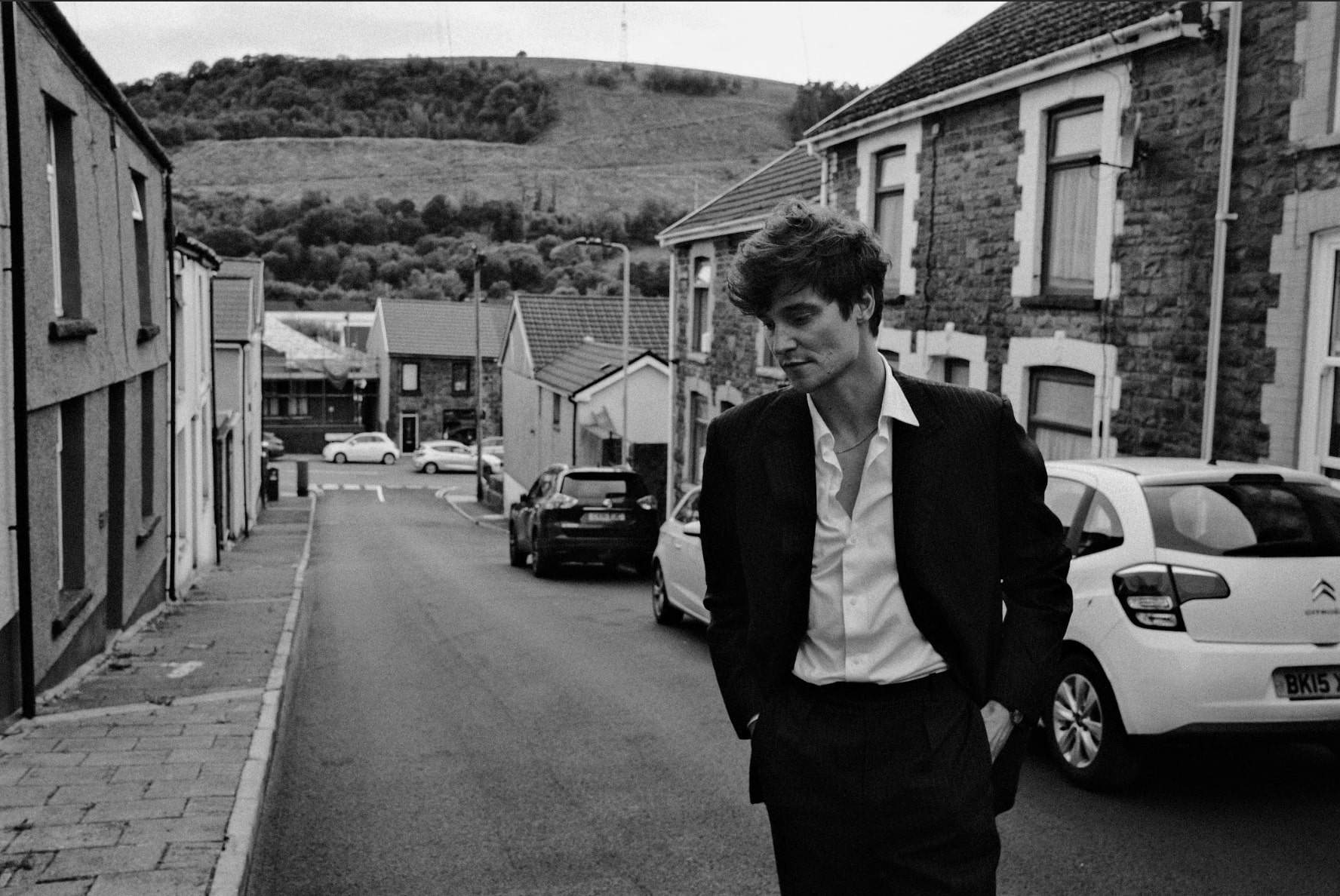Robert Callender Gives Interview as His 1968 Psych Album ‘Rainbow’ Receives an Anniversary Concert Release
Robert Callender remains one of the most enigmatic figures to emerge from the late sixties search for spiritual and creative transformation.
His 1968 album ‘Rainbow’ has long circulated among record collectors, a work of bright intent in which raga, jazz, soul, and spoken meditation are fused into what Callender once described as an interconnectedness between creators of all styles.
An underground masterpiece cherished by fans of psych, prog, and soul, ‘Rainbow’ was remarkably ahead of its time. The album’s unconventional sound fused Indian raga elements, R&B, jazz, and spoken word segments, which Callender used to express spiritual and sociological thoughts. It featured legendary session players like Bernard Purdie, Eric Gale, Hugh McCracken, and Collin Walcott on sitar and tabla, creating a complex, raga-fusion atmosphere. The songs, such as the lengthy ‘Purple’ and ‘Symphonic Pictures,’ utilize a Socratic method of asking questions and express a spiritual, universal sharing.
Heard today, ‘Rainbow’ feels uncannily prophetic, alive with concern for education, poverty, spirituality, and the plight of our fellow human being. The newly issued ‘Rainbow – The Anniversary Concert,’ released through Think Like A Key Music, reveals the full breadth of that enduring vision. Performed live for the first time in almost sixty years, the music carries a rare sense of devotion. Producer Chaim O’ Brien Blumenthal calls the performances nothing short of astounding, noting how brilliantly the work translated to the stage. Callender himself speaks of sowing the seeds of equanimity, love, and omniscience. The result is a powerful reaffirmation of an artist whose work now feels perfectly attuned to the present age.
‘Rainbow – The Anniversary Concert’ is available through Think Like A Key Music at the following link.
“My intent was to compose lyrics in which I utilized my concept of what the Socratic method was”
Tell us a bit about where you grew up and what that was like. What was the local music and cultural scene in those very early days, and how did it set you up or challenge you as a young artist?
Robert Callender: I grew up in a small town on the North Shore of Long Island and at the time Alan Freed’s Rock N Roll radio program on WINS AM and his Rock N Shows were an influence on everyone in New York, from Chuck Berry to Jackie Wilson and Sam Cooke. Then Elvis Presley came along and increased every teenager’s attitude and music interests as well. Around this time I began learning how to play the guitar and compose my own songs. I recorded my own demo of thirteen songs at the Brill Building in New York City when I was thirteen.
Your musical journey is wild, going from those early sixties pop singles like ‘Little Star’ and ‘Oh Yeah I’m In Love’ to the deep, spiritual psychedelia of ‘Rainbow’. Was there a specific moment, book, or person that just clicked and opened that inner door to your spiritual vision?
I will continue from where I left off from your first question, all of which led up to me hearing Murray The K’s Swinging Soiree on WINS AM’s Grave Yard Shift which was from eleven at night until six in the morning. I had just graduated from high school, and Murray’s show was very colorful and musical with a broad mixture of recording artists from Frank Sinatra to Bobby Darin. One evening two of my friends went to WINS to meet Murray out of pure curiosity, and he invited us upstairs into his on air studio. After we had a conversation about our mutual music interests, I discovered that Murray loved playing the drums and I had a drum pad, brushes, and bongos. He asked me if I would bring my pad, brushes, and bongos on during his night show, and I did. We would play together on and off the air. I played the bongos.
One evening when Murray took a break, he asked me to tell the studio engineer to cue up the next record if he did not return in time, which I ended up doing. This eventually led to my becoming his music programmer and radio producer when Murray replaced Cousin Brucie in the prime time slot on WINS. However, I was still composing new songs and looking for a record label to sign a recording contract while also working for him at WINS.
I was influenced by all genres of music that were around at the time. My singing led up to my signing a record contract with Roulette Records and working with the legendary producer George Goldner. Together we recorded ‘Little Star’ in nineteen sixty three, which became a regional hit. Then I left WINS and Murray, although we still remained friends.
When Murray went to WOR FM in nineteen sixty seven and nineteen sixty eight he asked me to come and work with him again, just five hours a day, and produce and program his new FM show. Although I was producing, composing, arranging, and recording my own music on Coral Records and beginning to compose new songs that would eventually end up in ‘Rainbow,’ I accepted his offer. I thought I could manage my time if I planned it all out carefully.
Of course, this time period was full of literary, musical, spiritual, and political influences. This was the time of assassinations, the Vietnam War, and civil rights demonstrations. Musically we had The Beatles and the British Invasion groups, Motown was coming out of Detroit, and the West Coast scene was beginning to shake things up, along with rhythm and blues recording artists and producers. It was an earthwide sphere of current affairs that had an influence on everyone at the time. Either you processed, learned, and evolved from all of these modern day influences and historical sources, from the Mahatma to Dr. Martin Luther King Junior and from Socrates to Herman Hesse and Gibran, or you attempted to use outside influences to get away from it all. It is fairly obvious which path I took.
Thinking back to singles like ‘Oh Yeah I’m In Love’ and ‘Day In Day Out,’ do you see any small creative threads there that hinted at the ambitious song cycles you would create later? Also, did your time working with Murray The K at WINS give you a unique perspective on the industry and maybe make you want to step outside of it?
I believe that I answered this question with the previous answer to your previous question. However, for the most part, I was a part of the New York City in crowd thanks to my working relationship with Murray and my top forty hit of ‘Little Star’ in New York. The shows that I would perform for radio station DJs like Scott Muni, as well as performing at The Cafe Wha and The Bitter End clubs in Greenwich Village, and meeting and networking with other performers, were incredibly helpful. Also, being an assistant stage manager at Murray’s Rock N Roll Shows at The Brooklyn Fox Theater taught me a lot, through which I was able to gain a perspective of what to do and what not to do. At the time I had heard that James Dean used to go to see B Movies to learn what not to do as an actor.
We know about the sixties scene, but which composers, poets, philosophers, or spiritual texts were crucial to developing your unique lyrical style? Who were your true mentors, even if only through their work?
What I learned from my accumulative experience was to sow seeds that brought good results, good friendships, and good experiences that would lead to a creative expression that was based upon truth, love, and equanimity. And this was what I desired to sing about when I was performing. All of this led me to an interconnectedness between artists of all genres who sincerely believed in their craft of choice, and in human and civil rights of the billions of people who believed in the universal, spiritual, democratic, and egalitarian rights of one and all.

“Each composition or album takes on its own identity.”
What was the vibe of the psych scene that ‘Rainbow’ emerged from? Your fusion of rhythm and blues, jazz, Indian raga, and spoken word is so unique. Did you feel like you fit in or stood apart from what was happening in, say, Greenwich Village or Laurel Canyon?
When I compose, I do not place any musical limitation upon whatever the lyrical, musical, arrangement, or production should be. Each composition or album takes on its own identity. However, there are moments when I would like to compose or produce a concept album that speaks to a specific statement in time, depending on whatever my personal or universal intent and purpose for creating or producing it may be. I like to use interludes and instrumental movements to tie it all together, as in ‘The Way (First Book Of Experiences)’ and ‘Le Musee De L Impressionnisme,’ as two examples.
‘Rainbow’ has been called a spiritual transmission. When you started writing, what was the core spiritual quest or message you were trying to capture? Was the whole concept of the spectrum and the color themes central from the very beginning?
My intent was to compose lyrics in which I utilized my concept of what the Socratic method was, asking questions, or to express a spiritual, universal, and meditational sharing, and a contemporary thought or idea about an individual or a sociological concern that I felt needed an answer.
The session players on ‘Rainbow’ are legendary. Bernard Purdie, Eric Gale, Hugh McCracken, and Collin Walcott on sitar and tabla. Can you walk us through the mood in the studio at Mayfair Recording Studios? How did these incredible jazz and rock musicians react to those complex raga and spoken word structures?
Everyone was open to the attempt to capture the purposeful intent of the recording of each composition, segment, spiritual, cultural, creative expression, and lyrical and melodic concept of each song. Sometimes we recorded each segment of a specific arrangement separately in order to focus our sole intent on capturing the sound and purpose of the arrangement. And all of the musicians accepted my being dressed in Kaftans, bare feet, and lighting candles in the studio. I felt that we were all united in the serious production, purpose, and interpretation of the creative expression of making this album.
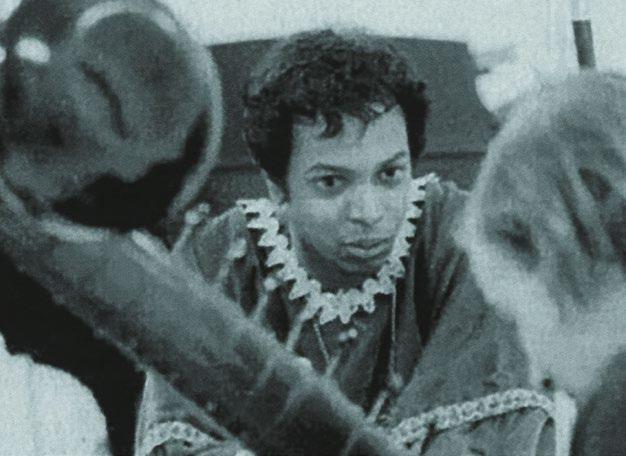
Let us talk about the tracks. ‘Purple’ is an eleven minute, intensely complex piece. What were the specific philosophical ideas you were exploring here, and how did you orchestrate the big shifts in mood and intensity?
‘Purple,’ because of its length and the fact that I had already recorded several songs with sitar, tamboura, and tabla in the ‘Rainbow’ sessions, was not thought to be necessary. However, to me its length did not matter. What did matter was that this composition gave me an opportunity to creatively express personal thoughts of a sensual nature, and to utilize electronic sounds to express an audio visual stream and ideas of spiritual and sociological thoughts on a current and prescient level.
And by using electronic sounds of rain, water crashing against rocks, the sounds of unexplainable mysteries, bombs exploding, and love, this raga provided me with a musical format and stage on which to include in this tone poem everything that its lyrics beheld.
And to perform it live in ‘Rainbow – The Anniversary Concert’ for the very first time was a wonderful and magical experience.
‘Sade Masoch’. That title hints at exploring darkness and pleasure. What was the lyrical or intellectual spark behind putting that juxtaposition into the context of your spiritual journey?
‘Sade Masoch’ is a play on words that interested me. And so I wrote lyrics to express this fictional theatrical moment about an individual who lost his way while attempting to search for the pearl of happiness. The pearl being the metaphor for something that often is unreal or beyond our reach.
‘Symphonic Pictures’ closes the original sequence. Did you intend for it to be a summation of the journey or perhaps a projection of future thought? How vital were those orchestral arrangements to the vision of this piece?
Symphonic Pictures was my using the Socratic method and asking questions that I felt were pertinent in current affairs and needed answering. I also felt that each musical arrangement adds to the lyrical, emotional, and conceptual nature of each individual segment.
What was the working dynamic like with producer Alan Lorber and arranger Paul Harris? Given how unconventional the album is, how much creative freedom did you have, and how essential were they in making that ambitious sonic palette happen, especially the string arrangements?
Working with Paul Harris was very gratifying because he transcribed and arranged each musical production and recording in alignment with the idea, melody, rhythm, and performance of each song exactly as I wished it to be, and with the instrumentation that I wanted. This gave me the freedom that I needed to produce and record ‘Rainbow’ as I envisioned it.
And Alan Lorber introduced me to the Vice President of MGM Records, who liked my demo of ‘Sade Masoch,’ which I produced and recorded in Bob Gallo’s studio near Stony Brook, Long Island, and offered me the album deal because he liked how I wrote stories to the East West musical and lyrical concepts. And perhaps most importantly, he prevented MGM executives from interrupting the recording session.


The album is an enduring cult classic now, but it was not a commercial hit at the time. What was the response like from MGM, the press, and the public? Did the lack of immediate mainstream recognition lead you to change direction or feel any disappointment?
I was not aware of the specific details regarding MGM operations. However, the label change in management happened approximately around the same time period as the ‘Rainbow’ release, which was not helpful in the least.
However, please understand that I was evolving on my own personal universal, spiritual, soulful way of life, and creative musical and lyrical vision path, which led to an avatar that I will always be grateful for.
‘The Way (First Book Of Experiences)’ followed in nineteen seventy one or nineteen seventy two. How do you see ‘The Way’ as either a continuation or a departure from ‘Rainbow’? What exactly was the ‘First Book Of Experiences’ referring to, and where did the idea for the mysterious spoken word segment about John come from?
‘The Way’ documented the avatar that I had experienced. And I was both the tour guide who guided John through ‘The Way (First Book Of Experiences)’ and who shared the omniscience with him, and introduced John to the illuminated and spiritual beings that they met as they journeyed along ‘The Way’. John was simply a pseudonym that I chose.
It was easier explaining my avatar that way, as being both the tour guide and John.
‘Le Musee De L Impressionnisme’ is famously eccentric, a psych funk suite dedicated to French Impressionist painters and released only in the Netherlands. That is a huge concept. What specifically inspired you to link these two seemingly different worlds of painting and psych funk? Was it a fun artistic challenge or a deep personal connection?
I was inspired to compose the songs to ‘Le Musee De L Impressionnisme’ after visiting the Jeu de Paume Museum for the first time. After entering La Chambre de Claude Monet I was so totally inspired by this great artist that I had to write a song about him. I was passionately motivated to continue composing songs about each artist that I saw at the Jeu de Paume Museum.
What was also especially interesting to me was how hard they had to struggle to exist and to do their craft, often against the will and opinion of the art pundits. And I thought of the struggle that many artists I knew in New York City were going through to achieve their goals in life, whether they were actors, actresses, photographers, dancers, singers, musicians, or in whatever genre they chose.
After completing all the compositions, I decided to call it ‘Le Musee De L Impressionnisme’. However, then I had to find musicians, singers, and dancers in New York City to perform it, and the finances to record it, and a label to release it. All of this took a great effort to accomplish and required a lot of networking, and the commitment of a very talented ensemble of interdependent musicians, singers, and dancers.
The business part of being in music or the record industry ends up being quite important. But I persevered with a lot of help from friends and private investment sources, empresario Sid Bernstein, Longview Farm studio, and Unichappell, and Trudie Hellers venue on Sixth Avenue and Eighth Street in Greenwich Village, where we staged performances of ‘Le Musee De L Impressionnisme’.
Your entire body of work is built on these high concept, multi part song cycles. What is it that draws you to this format over writing standard verse chorus songs? Do you feel like you are creating literary pieces or cinematic scores more than collections of songs?
It is quite simply expressing one’s feelings, and sowing the seeds of equanimity, love, peace, good friendship, tranquility, omniscience, soul strength, enlightenment, intelligence, history, and the omnipresent path of oneness and wholeness. And remaining in balance spiritually, soulfully, universally, personally, emotionally, metaphysically, and physically with the Great Spirit or whoever you feel blessed, graced, guided by, healed by, nourished by, and protected by. And then the sharing of it all with all who are truly of ‘The Way’.
After these three hugely unique albums, your trail seemed to go cold for decades. What led to your withdrawal from the scene? Was it a conscious decision to pursue other kinds of exploration, or just the natural evolution of your life?
I did not withdraw! I have been very prolific and creative since producing, arranging, composing, and singing these three albums! I became increasingly involved in cross media projects, and music was for the most part a part of them, whether it be theatrical stage projects, TV, film, or other architectural and community minded cultural, technological, environmental, current affairs, public service, musical, or children’s projects.
And being a conceptual artist and producer often leads one down many seemingly different paths. However, they are all a part of a grand universe of extraordinary thoughts, ideas, and actions.
The Long Awaited Performance. For nearly 60 years, ‘Rainbow’ was a masterpiece kept in the studio. Why did you not perform the album live back in 1968, and what does it feel like now, after all this time, to finally bring this music to the stage?
Because of all the different musical components of ‘Rainbow,’ it made it difficult for a single artist who was not managed at the time in the sixties to finance or find an agency in NYC to fund the performing of ‘Rainbow’. And MGM was not in the position to help in this regard. Also, the fact the album was not on the Billboard charts did not help matters.
Performing it live for the first time at Timucua was very interesting for me, as you might imagine. It was challenging to perform because of all the significant and meaningful reasons that are a part of performing anything live, but the musicians and Timucua accepted the challenges involved, and because of their skill and talent it became a memorable moment.
However, it was the sharing of ‘Rainbow’ with the audience that truly moved me, and expressing the lyrics, stories, tone poems, and spiritual insights as the music took me from song to song was totally engaging. And the positive reaction from the audience and their involvement was very gratifying. I am looking forward to performing the album again, although when or where it will happen has not been decided yet.
What was it about your friend Benoit Glaser and the Timucua Arts Foundation that was the final push you needed to stage this? You have come back into the spotlight with Think Like A Key Music. How exciting is this whole re emergence for you personally?
Benoit Glaser was brought to my attention in 2020 when I was in NYC. A colleague called me from Orlando and during our conversation told me about Benoit and Timucua Arts Foundation, also known as The White House in Orlando, and that it would be a perfect venue for me to perform ‘Le Musee De L Impressionnisme’ in and that I should go to one of Timucua’s presentations the next time I returned to Orlando. And I did.
There was an artist painting the live show on stage, and Benoit and his wife Elaine opened each show with a performance of their own that also included their three children.
In addition, the audience brought food and drink and made you feel that you were part of their extended family. The performers at Timucua were all of the highest caliber, from renowned guitarist Larry Coryell to local groups who needed a platform to display their talents.
I wanted to contribute in some way to show my support for his magnificent efforts. And that was how we met.
Several years later, when it was the fiftieth anniversary of ‘The Way (First Book Of Experiences),’ I went back to Timucua and Benoit was amenable to my performing the album there. He and his very supportive staff found the musicians and singer I collaborated with, and Brandon to write out the transcripts, rehearse with, and celebrate the fiftieth anniversary with, before a very appreciative full house.
This memorable experience led me to want to perform Rainbow. Most of the musicians I had collaborated with previously at Timucua returned to perform Rainbow with me, with the addition of Kanada, Nandu, Maria, Tina, both of Benoit’s sons and members of Golden Flower, the Fernwood String Quartet, and others at Timucua. (Refer to the sixteen pages of liner notes and album credits for their full names if you need them.)
‘The Anniversary Concert’ featured a huge group including the jazz ensemble Golden Flower and a string quartet, sitar, and tabla. How did you approach the practical challenge of rearranging and adapting those dense 1968 orchestrations for a modern mixed genre live band?
Fortunately for me, members of Golden Flower knew of The Way and it was their dedicated commitment to perform the album as it was recorded. And they did.
Brandon Miller worked arduously and respectfully in writing the transcripts and rehearsing Golden Flower, and the results were excellent. In many ways we became each other’s extended family, a feeling that continues to this day.
What was the process of working with Music Director Brandon Miller and these contemporary musicians? Did the new ensemble shed light on any aspects of the music you had forgotten or had not fully realized in the original studio recordings?
I answered this in the previous question. However, ‘The Way’ is not a top ten record commercially speaking, and the stories have a deep significance to me.
No, I had not forgotten the challenges of performing ‘The Way’ or singing its songs, or the fulfillment of sharing it with an audience for the first time in fifty years.
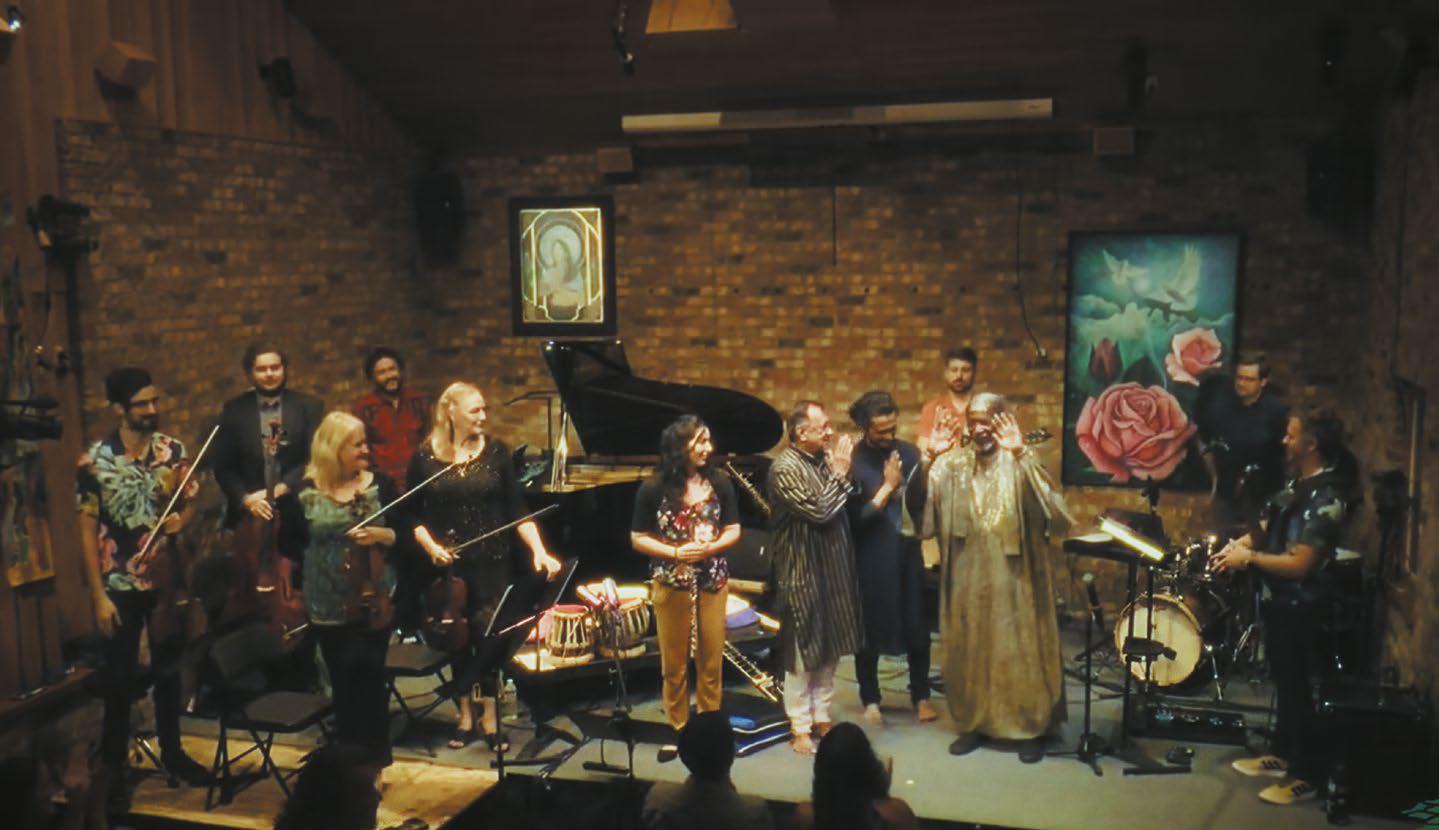
How did it happen that the concert was realized as a CD/DVD and vinyl release? What was the process behind that?
Because ‘Rainbow’ was an album beloved worldwide by listeners that had not been performed in fifty years, we thought that the best way to share it with as broad an audience as possible, seeing as not all could travel to Orlando for the performances, was to share the concert with everyone via CD/DVD and vinyl.
It was Producer Writer Record Archivist DJ Chaim O’ Brien Blumenthal who guided me to Roger Houdaille and Think Like A Key Music. And from that point, we all worked in concert to produce the end result, which is the CD/DVD and vinyl release with sixteen pages of liner notes and pictures telling the story of ‘Rainbow’ and its journey from the original 1968 album to the present day.
Roger and his label remind me of Jac Holzman and Elektra Records, who discovered so many very talented artists and music icons in the 1960s and 1970s. As Elektra created a platform for independent, creative, and highly expressionistic artists, so is Think Like A Key Music doing the same thing in the twenty first century. And Chaim is also a discoverer of new talent of the twenty first century, as well as a musical conservationist, musical archivist, and preserver of music of all ages.
And altogether both Roger and Chaim are creating a universal platform for creative expression.
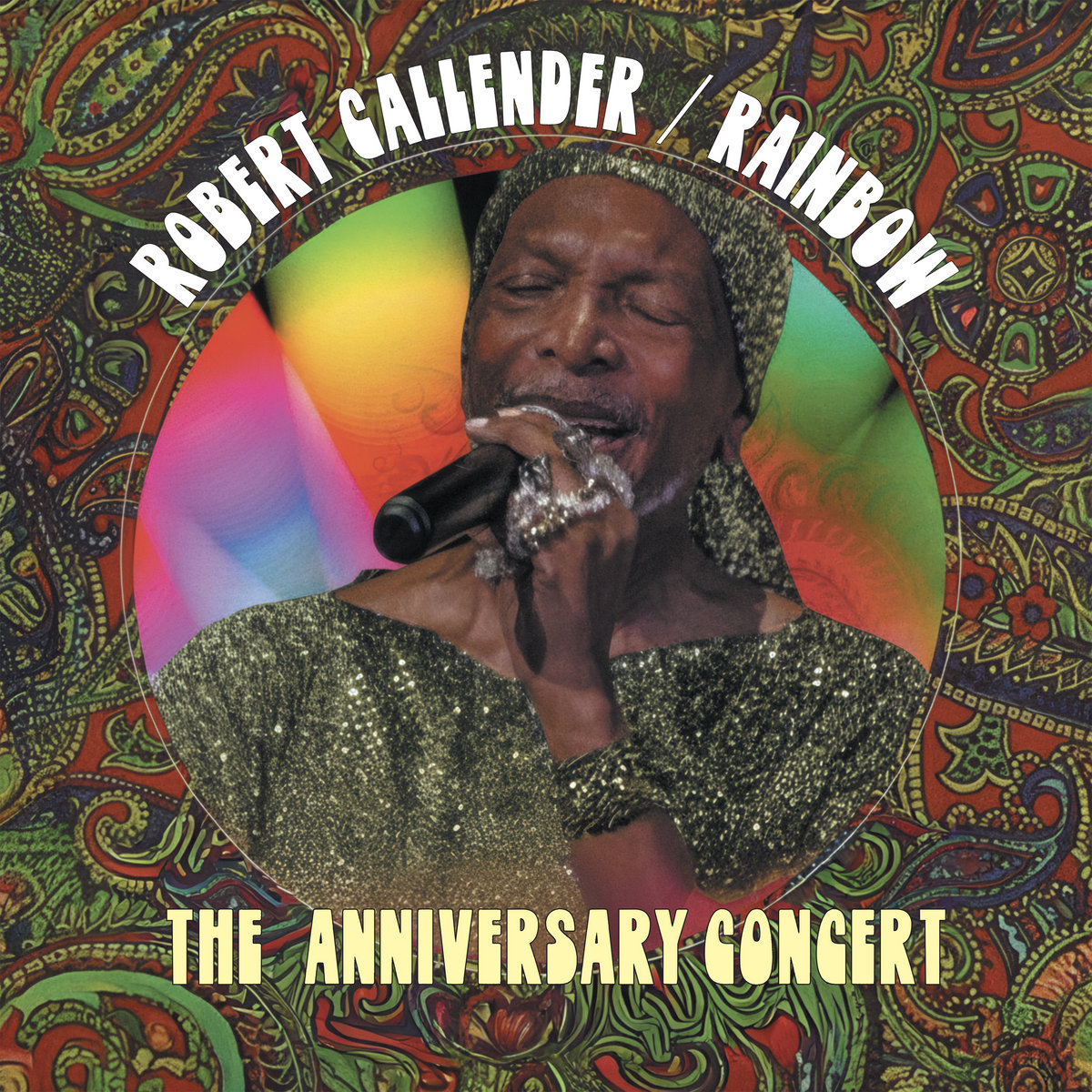
This concert is being released as a 2 disc CD/DVD set and a vinyl album. How important was it to you that the performance was captured as both a complete audio set and a full length concert film? What treasures can fans expect from the sixteen page booklet and your personal insights inside it?
I like very much the idea that fans of ‘Rainbow’ will have an opportunity to hear and see the anniversary concert of this album. A lot of personal, spiritual, and creative information is in the sixteen pages of liner notes. Those who purchase the CD or vinyl release will also be provided with concise data about the making of ‘Rainbow – The Anniversary Concert,’ as well as stories about how the original 1968 album came to be. I also hope that it will encourage them to come to our next series of performances in the United States and internationally.
‘Rainbow’ came from the counter culture and spiritual searching of the late 60s. What do the themes and message of ‘Rainbow’ mean to you right now, fifty plus years later, in the context of our modern world? Do you feel listeners are more ready for its complexity today than they were in 1968?
It is ironic that many of the themes of ‘Rainbow’ are still current today, whether it be concern for education, poverty, spirituality, war, attempts to limit one’s creative expression, or the plight of our fellow human being.
And it is ever more apparent and obvious that a new era of peacemakers and voices of reason and conservationists and preservationists of the earth’s sovereign solar United Nations and members of the earth wide entertainment community must come forth as they did in the 1960s and join in concert with the youth of the earth to sow the seeds of a new era of peace, justice, equality, freedom, economic parity, and non violently commit and dedicate themselves to an altruistic meritocracy of egalitarian rights and principles for one and all.
And yes, I feel that my music and lyrics are perfect for this multicultural, sociological Rainbow community and magnificent tapestry, a beautiful fabric of twenty first century communication and online platforms in this age of unlimited potential.
Does the success of the Anniversary Concert open the door for more live performances of your other works, perhaps ‘The Way,’ or even brand new material? What is the next vision you feel compelled to pursue?
Think Like A Key Music has expressed a desire to explore future CD/DVD and vinyl releases, one of ‘The Way (First Book Of Experiences)’ live concert and another being ‘Le Musee De L Impressionnisme,’ which is good news and I look forward to it.
I have been working on producing, arranging, and singing on a new progressive pop rock operetta, and I look forward to beginning the recording of it.
The orchestrations are powerful and the melodies are wonderful to sing and harmonize with. The rhythms are grooves that lead to pleasurable movements that cannot be denied. The lyrics are of a nature that is prescient, poetic, spiritual, current, and descriptive of times gone by and of the future.
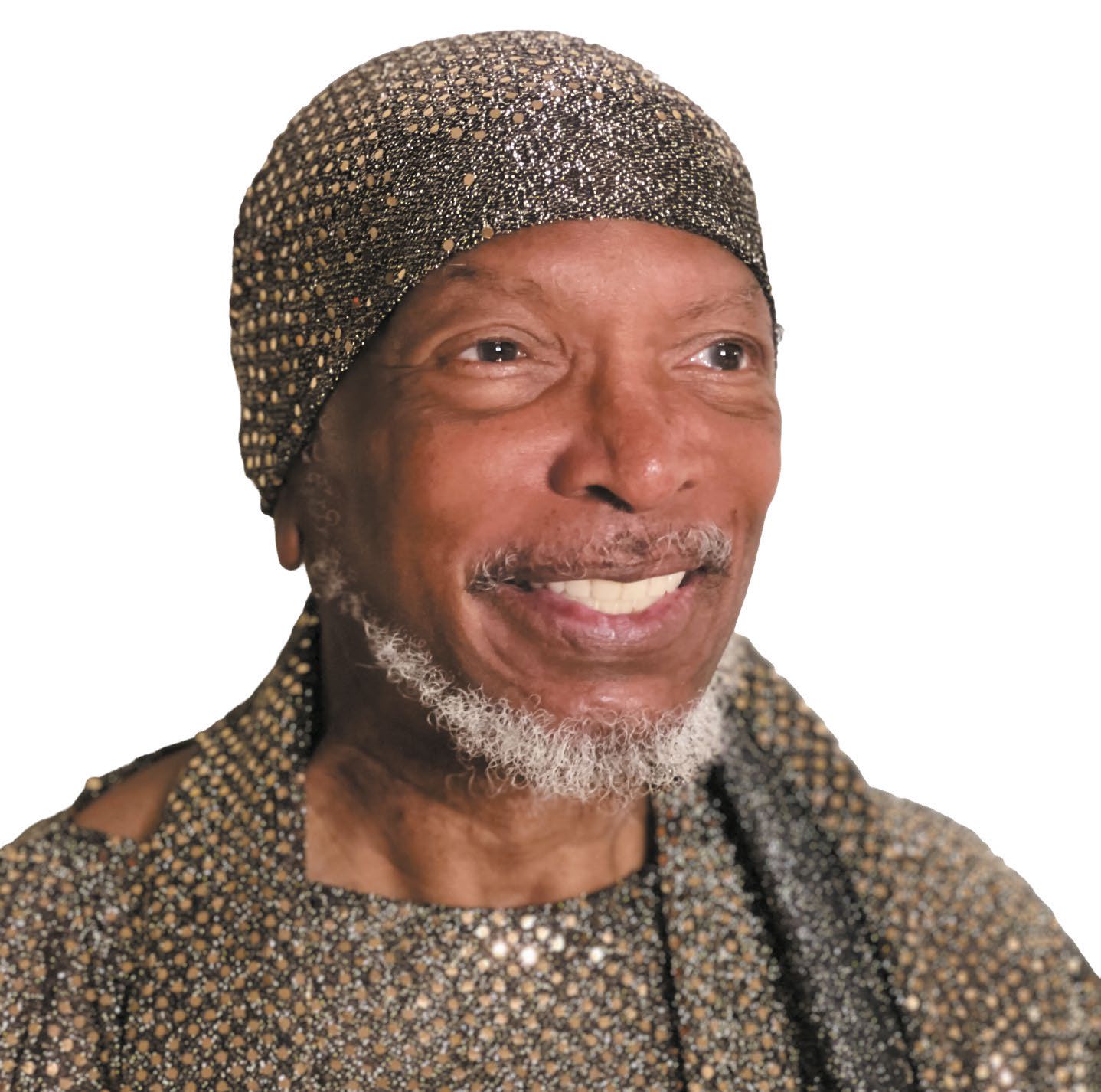
On a more general note, outside of music, what else currently occupies your life?
Providing public service, enjoying my family and dear friendships, working with trustworthy colleagues, reading, taking long walks, playing the guitar, films, cross media entertainment, sports, journalism, games, and being a civil, environmental, spiritual, and human rights activist, and a peer of the music and recording industry whenever possible.
Sharing The Light, Peace, and The Celestial Song Of Life,
Robert Callender
Some thoughts from ‘Rainbow – The Anniversary Concert’ album producer Chaim O’ Brien Blumenthal:
Getting to know Robert Callender over the past several years has been nothing but an absolute joy. I first made contact with Robert when I reached out to him to be interviewed for Shindig! Magazine, for which I have long been a contributor. As many who have been intrigued by Robert formerly Bobby Callender’s music are no doubt aware, his career has long been shrouded in mystery and intrigue, going back to the sixties. As someone who has tracked down countless artists for interviews and projects over the years, it was an honor to be able to speak at length with Robert, in the process conducting his first career spanning interview, in which Robert got to tell his story in print, debunking some myths whilst leaving plenty of intrigue still intact. To say our conversation was eye opening would be an understatement. Robert shared countless stories about his life and art and career, all of which are nothing short of fascinating.
After having the pleasure of attending the Rainbow anniversary shows in Orlando via livestream, I was both mesmerized and astounded by the musicianship and quality of the performances. It is never easy to perform an album for the first time ever on stage, even less so when it is one you recorded nearly sixty years prior.
Attending that show, even virtually, I was taken aback by how brilliantly it translated to the stage and how well all the musicians performed together, and it became a goal of mine almost instantly to convince Robert to see the concert released as an album. Thanks to our already friendly working relationship and the positive feedback I had received from the Shindig! feature, Robert was receptive to the idea. My next step was to pitch the idea to an equally receptive record label that understood Robert’s music and history.
As someone who has worked with numerous labels and projects, I have a lengthy rolodex, but it is most important to me that the artist is a right fit for the label. More than anything, a solid working relationship and a desire from all involved drive a project toward completion and success. In collaborating with Roger Houdaille at Think Like a Key Music, Robert and I found the perfect partner, someone who understood how talented and creative Robert Callender is, and how special his music is.
The result of this collaboration between Roger, Robert, and myself is the ‘Rainbow – The Anniversary Concert’ album, which will be available in stores, online, and streaming in November 2025 from TLAK Music. For those who purchase the vinyl LP or CD/DVD packages, you will be treated to extensive liner notes from yours truly, which manage to document the history of ‘Rainbow’ and chart Robert’s career, from how he got to the point of recording the album in 1967 68, and bring it to the present day anniversary concerts. And most importantly, you will hear from Robert Callender himself, as he has contributed a generous introduction to the booklet and liner notes. Now listeners worldwide, once they get their albums, will be able to discover its beauty and enjoy every moment of ‘Rainbow’.
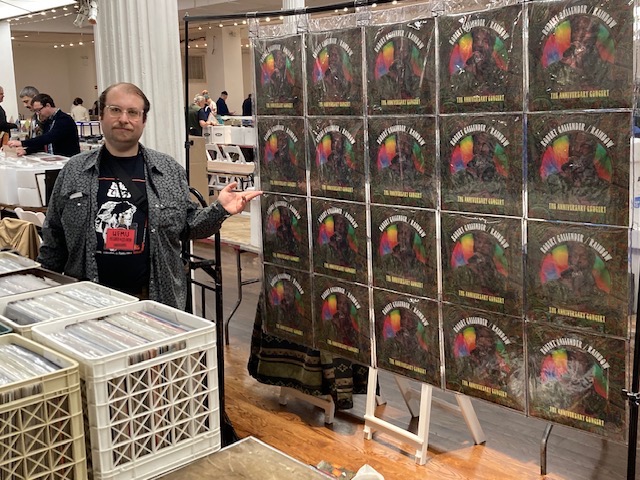
I am extremely grateful to all the musicians who collaborated with Robert to make the ‘Rainbow’ anniversary concerts an astounding success. An equally appreciative thank you to Benoit Glazer and his family for staging the shows at Timucua and working with TLAK to share audio and video from those performances. Thanks to Roger Houdaille for being so wonderful to work with at Think Like a Key Music, and thanks to Jonathan Mills and Andy Morten at Shindig! for being supportive. None of this could have been done without all of your support and collaboration.
A special thank you to Klemen Breznikar at It is Psychedelic Baby for reaching out to interview Robert Callender and for being so supportive of sixties and seventies psychedelic and underground sounds. We share a similar passion for discovering and turning readers and listeners onto great music, new and old. Here is hoping many get tuned into and turned onto ‘Rainbow’.
Please check Think Like a Key’s website, Facebook, and social media for updates on Robert Callender and ‘Rainbow,’ as we look toward future stage performances of the album in the USA and Europe in 2026. Thanks.
Klemen Breznikar
Think Like A Key Music Official Website / Facebook / X / Instagram / Bandcamp / YouTube
